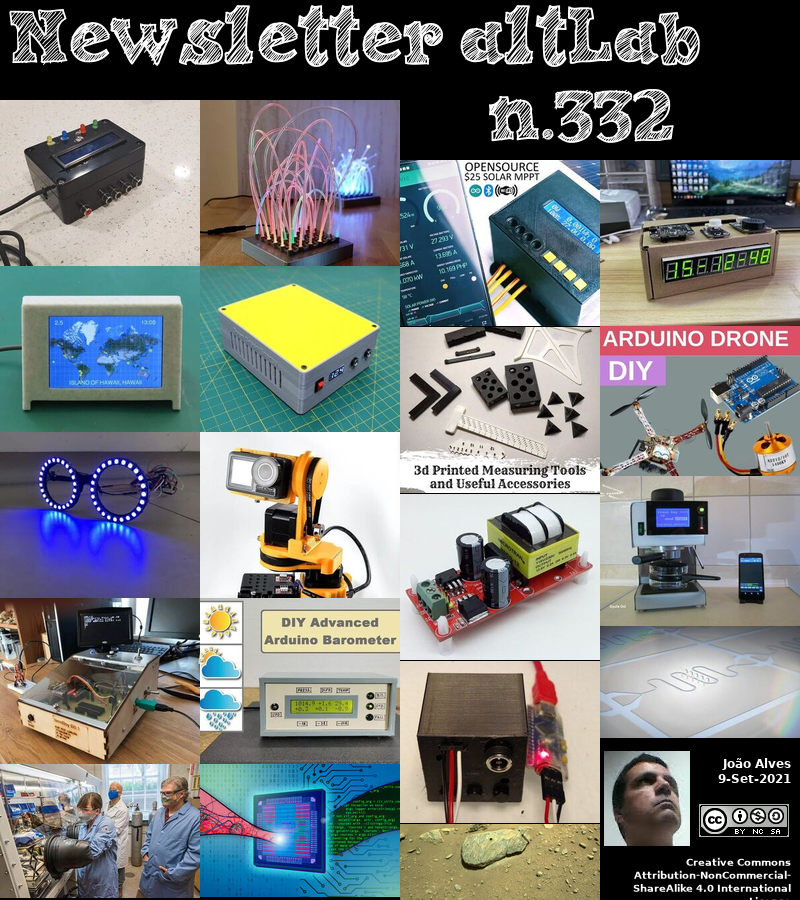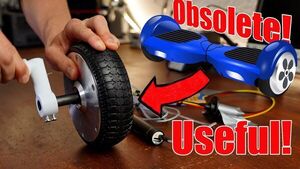2021-09-09 - Nº 332
Editorial
Esta é a Newsletter Nº 332 que se apresenta com o mesmo formato que as anteriores. Se gostar da Newsletter partilhe-a!
Todas as Newsletters encontram-se indexadas no link.
Esta Newsletter tem os seguintes tópicos:
Faz hoje anos que nascia, em 1737, o médico e físico italiano Luigi Galvani. Ele estudou a estrutura dos órgãos e a fisiologia dos tecidos que é mais conhecida pela sua investigação sobre a natureza e efeitos do que concebeu como sendo electricidade em tecidos animais. Observou como os músculos das rãs se torciam quando eram tocados por contactos metálicos, mas atribuiu erroneamente isto à "electricidade animal" inata (a corrente era de facto produzida pelos contactos metálicos). Isto foi contestado por Alessandro Volta que, no decurso deste argumento, inventou a sua célula electroquímica. A corrente produzida por este dispositivo foi durante muitos anos chamada "electricidade galvânica". O galvanómetro recebeu o seu nome.
Faz também hoje anos que nascia, em 1852, o físico britânico John Henry Poynting. Ele introduziu um teorema (1884-85) que atribui um valor à taxa de fluxo de energia electromagnética conhecido como o vector Poynting, introduzido no seu artigo Sobre a Transferência de Energia no Campo Electromagnético (1884). Nisto ele mostrou que o fluxo de energia num ponto pode ser expresso por uma fórmula simples em termos das forças eléctricas e magnéticas nesse ponto. Ele determinou a densidade média da Terra (1891) e fez uma determinação da constante gravitacional (1893) utilizando balanços de torção precisos. Foi também o primeiro a sugerir, em 1903, a existência do efeito da radiação do Sol que faz com que partículas mais pequenas em órbita em torno do Sol se fechem em espiral e acabem por mergulhar para dentro.
Faz igualmente hoje anos que nascia, em 1922, o físico americano nascido na Alemanha Hans Georg Dehmelt. Ele "para o desenvolvimento da técnica da armadilha iónica" partilhou o Prémio Nobel da Física de 1989 (com o físico alemão Wolfgang Paul e Norman Ramsey). Os seus métodos permitiram o estudo de um único electrão ou de um único ião com extrema precisão. O dispositivo electromagnético de Delmelt, a armadilha de Penning, em 1973 observou com sucesso um único electrão na armadilha. Em 1975, ele introduziu uma técnica para "arrefecer" o electrão. Mais tarde, na década de 1970, Dehmelt juntamente com P. Toschek conseguiram observar um único ião numa armadilha. Isto levou à espectroscopia de um íon, um novo tipo de espectroscopia.
Por fim, faz hoje anos que nascia, em 1941, o cientista informático americano Dennis Ritchie. Ele criou a linguagem de programação C e, com o colega de longa data Ken Thompson, o sistema operativo Unix e a linguagem de programação B. Ritchie e Thompson receberam o Prémio Turing da ACM em 1983, a Medalha Hamming da IEEE em 1990 e a Medalha Nacional de Tecnologia do Presidente Bill Clinton em 1999. Ritchie era o chefe do Departamento de Investigação de Software de Sistemas da Lucent Technologies quando se reformou em 2007. Era o "R" em K&R C, e comummente conhecido pelo seu nome de utilizador dmr.
Em 1947, uma equipa de cientistas informáticos relatou o primeiro bug informático do mundo. Um bug é uma falha ou falha de um sistema. Thomas Edison relatou "bugs" nas suas concepções já no século XIX, mas este foi o primeiro bug identificado num computador. Hoje em dia, os bugs de software podem ter impacto no funcionamento, resiliência, e segurança dos sistemas operativos de computador. A "depuração" e a gestão de bugs são partes importantes da indústria do IT. Este bug, no entanto, era literalmente um bug. "Primeiro caso real de bug a ser encontrado", um dos membros da equipa escreveu no livro de registo. A equipa da Universidade de Harvard em Cambridge, Massachusetts, descobriu que o seu computador, o Mark II, estava a cometer erros consistentes. Quando abriram o hardware do computador, encontraram... uma traça. O insecto encurralado tinha perturbado a electrónica do computador.
Na Newsletter desta semana apresentamos diversas noticias, artigos científicos, projetos de maker assim como alguns videos interessantes.
 João Alves ([email protected])
João Alves ([email protected])
O conteúdo da Newsletter encontra-se sob a licença  Creative Commons Attribution-NonCommercial-ShareAlike 4.0 International License.
Creative Commons Attribution-NonCommercial-ShareAlike 4.0 International License.
Novidades da Semana
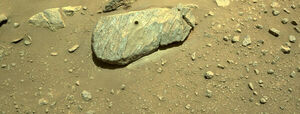
NASA’s Perseverance Rover Successfully Cores Its First Rock
"Perseverance will obtain additional imagery of the sample tube before potentially completing the process of collecting its first scientifically-selected Mars sample. Data received late Sept. 1 from NASA’s Perseverance rover indicate the team has achieved its goal of successfully coring a Mars rock. The initial images downlinked after the historic event show an intact sample present in the tube after coring. However, additional images taken after the arm completed sample acquisition were inconclusive due to poor sunlight conditions. Another round of images with better lighting will be taken before the sample processing continues. Obtaining additional imagery prior to proceeding with the sealing and storing of Mars rock sample is an extra step the team opted to include based on its experience with the rover’s sampling attempt on Aug. 5." [...]

Sony to Release Two Types of Stacked Event-Based Vision Sensors with the Industry’s Smallest*1 4.86μm Pixel Size for Detecting Subject Changes Only Delivering High-Speed, High-Precision Data Acquisition to Improve Industrial Equipment Productivity
"Sony Semiconductor Solutions Corporation (“Sony”) today announced the upcoming release of two types of stacked event-based vision sensors. These sensors designed for industrial equipment are capable of detecting only subject changes, and achieve the industry’s smallest*1 pixel size of 4.86μm. Event-based vision sensors asynchronously detect luminance changes for each pixel and output the changed data only, combining it with information on pixel position (xy coordinates) and time, thereby enabling high-speed, low latency data output. The two new sensors employ stacking technology leveraging Sony’s proprietary Cu-Cu connection*2 to achieve the industry’s smallest*1 pixel size of 4.86μm. In addition to operating with low power consumption and delivering high-speed, low-latency, high-temporal-resolution data output, the new sensors also feature a surprisingly high resolution for their small size. All of these advantages combine to ensure immediate detection of moving subjects in diverse environments and situations." [...]

Microchip Unveils Industry’s Most Compact 1.6T Ethernet PHY with Up to 800 GbE Connectivity for Cloud Data Centers, 5G and AI
"META-DX2L enables routers, switches and line cards to double their bandwidth by transitioning to 112G PAM4 interface rates. Routers, switches and line cards need higher bandwidth, port density and up to 800 Gigabit Ethernet (GbE) connectivity to handle escalating data center traffic driven by 5G, cloud services and Artificial Intelligence (AI) and Machine Learning (ML) applications. To deliver the higher bandwidth, these designs need to overcome the signal integrity challenges associated with the industry’s transition to the 112G (gigabits per second) PAM4 Serializer/Deserializer (SerDes) connectivity that is needed to support the latest pluggable optics, system backplanes and packet processors. These challenges can now be overcome with the industry’s most compact, 1.6T (terabits per second), low-power PHY (physical layer) solution from Microchip Technology Inc. (Nasdaq: MCHP) with its PM6200 META-DX2L that reduces power per port by 35 percent compared to its 56G PAM4 predecessor, META-DX1, the industry’s first terabit-scale PHY solution. “The industry is transitioning to a 112G PAM4 ecosystem for high-density switching, packet processing, and optics,” said Bob Wheeler, principal analyst for networking at The Linley Group. “Microchip’s META-DX2L is optimized to address these demands by bridging line cards to switch fabrics and multi-rate optics for 100 GbE, 400 GbE and 800 GbE connectivity”." [...]

70-W BLDC motor drivers from Texas Instruments eliminate months of design time with code-free, sensorless FOC and trapezoidal control
"Integrated real-time control enables engineers to spin BLDC motors in less than 10 minutes while making motor systems quieter and as much as 70% smaller. Texas Instruments (TI) (Nasdaq: TXN) today introduced the industry’s first 70-W brushless DC (BLDC) motor drivers to provide code-free, sensorless trapezoidal and field-oriented control (FOC). The devices enable engineers to spin a BLDC motor in less than 10 minutes – eliminating months of design time for engineers designing a wide variety of industrial systems such as major and small home appliances, and medical applications such as ventilators and continuous positive airway pressure (CPAP) machines. With integrated real-time control and up to 18 discrete components – including power metal-oxide semiconductor field-effect transistors (MOSFETs) – the devices also speed system response time while reducing board space by as much as 70%, all while providing best-in-class acoustic performance. For more information, see www.ti.com/mcf8316a-pr and www.ti.com/mct8316a-pr. "The need for real-time motor control is more critical than ever, thanks to broad-reaching trends like power efficiency and automation, as well as increasing demand for quieter motors," said Noman Akhtar, senior research analyst, Omdia." [...]

Time-of-Flight 8×8 Multi-Zone Ranging Sensor from STMicroelectronics Enables Innovative Applications
"STMicroelectronics has announced the first multi-zone FlightSense™ time-of-flight sensor to be offered for general-purpose applications, bringing sophisticated distance sensing to the full spectrum of consumer and industrial products. The VL53L5CX sensor provides up to 64 sensing zones with multi-target detection, distance measurement up to four meters in each zone, and a wide square-edged field of view with 63° diagonal. The sensor is suited to gesture recognition, complex scene analysis including 3D room mapping for robotics, storage-tank level monitoring to assist in inventory management, liquid-level control, and waste-bin-level monitoring to enable smart refuse collection for enhanced efficiency. By supporting gesture recognition and automatic human-presence detection, the VL53L5CX enables safe, touch-free operation with significant power-saving when used for waking-up publicly accessible equipment such as self-service payment terminals, as well as consumer products and domestic appliances. Featuring ST’s proven histogram processing, which greatly reduces the impact of cover-glass crosstalk, the sensor can be easily integrated and hidden behind various types of front panels. The new and innovative motion-indicator feature allows the sensor to detect if the target has moved or not." [...]

Renesas Launches 32-Bit RX671 MCUs Realizing High Performance and Power Efficiency with HMI Functions for Contactless Operation
"A Single-Chip Solution for a Wide Range of Needs That Combines Large Memory Capacity and an Ultracompact Package. Renesas Electronics Corporation (TSE:6723), a premier supplier of advanced semiconductor solutions, today introduced the RX671 group of 32-bit microcontrollers (MCUs), adding a new high-performance, high-functionality single-chip solution with touch sensing and voice recognition capabilities for contactless operation to the popular RX Family. Part of Renesas’ mainstream RX600 Series, the RX671 MCUs are built around an RXv3 CPU core operating at 120 MHz and integrates flash memory supporting fast read access at a clock speed of 60 MHz, for excellent real-time performance with a CoreMark score of 707, and power efficiency among the best in the class at 48.8 CoreMark/mA. Available in a wide variety of packages with pin counts ranging from 48 to 145 pins with up to 2 megabytes (MB) of flash memory and 384 kilobytes (KB) of SRAM, the RX671 MCUs are well suited for a wide range of applications that require advanced functionality, power efficiency, and compact size, such as heating, ventilation, and air conditioning (HVAC), smart meters, and smart home appliances. For size-constrained devices that require advanced functionality, the RX671 is available with 2 MB of flash memory in a 64-pin TFBGA package measuring only 4.5 mm × 4.5 mm – among the smallest anywhere among MCUs with 2MB flash memory. The COVID-19 pandemic created new health and safety requirements that are transforming how people interact with their devices and environments, increasing the demand for hygienic contactless user interfaces in particular." [...]

Mobileye and SIXT Plan New Robotaxi Service
"During a keynote at IAA Mobility today, Intel CEO Pat Gelsinger and Sixt SE Co-CEO Alexander Sixt announced a collaboration to begin offering autonomous ride-hailing services in Munich in 2022. The collaboration between Intel subsidiary Mobileye and SIXT, a leading international provider of mobility services headquartered in Germany, also aspires to scale driverless ride-sharing services across Germany and other European countries later this decade. Riders will be able to access the service via the Moovit app as well as the SIXT app. The autonomous robotaxi offering will be included in SIXT’s holistic mobility platform ONE, which combines in just one app products for ride hailing as well as car rental, car sharing and car subscriptions. By integrating the services of cooperation partners like Mobileye, the ONE mobility platform gives SIXT customers worldwide access to more than 200,000 vehicles, 1,500 cooperation partners, around 1.5 million drivers and soon even robotaxi services. The autonomous robotaxi option will be part of the ride-hailing service SIXT ride and was demonstrated during Alexander Sixt’s keynote walk-on." [...]

Nissan and Waseda University in Japan testing jointly developed recycling process for electrified vehicle motors
"New process efficiently recovers high-purity rare-earth compounds from motor magnets, practical application targeted for mid-2020s toward carbon neutral goal Nissan Motor Co., Ltd. and Waseda University today announced the start of testing in Japan of a jointly developed recycling process that efficiently recovers high-purity rare-earth compounds from electrified vehicle motor magnets. The testing is aimed at enabling practical application of the new process by the mid-2020s. The automotive industry is promoting vehicle electrification to tackle climate change and to realize a carbon-neutral society. Most motors in electrified vehicles use neodymium magnets, which contain scarce rare-earth metals such as neodymium and dysprosium. Reducing the use of scarce rare earths is important not only because of the environmental impact of mining and refining, but also because the shifting balance of supply and demand leads to price fluctuations for both manufacturers and consumers. To use limited and valuable resources more effectively, since 2010 Nissan has been working from the design stage to reduce the amount1 of heavy rare-earth elements (REEs) in motor magnets." [...]
Ciência e Tecnologia

High-energy shape memory polymer could someday help robots flex their muscles
"When stretched or deformed, shape memory polymers return to their original shapes after heat or light is applied. These materials show great promise for soft robotics, smart biomedical devices and deployable space structures, but until now they haven’t been able to store enough energy. Now, researchers reporting in ACS Central Science have developed a shape memory polymer that stores almost six times more energy than previous versions. Shape memory polymers alternate between an original, undeformed state and a secondary, deformed state. The deformed state is created by stretching the polymer and is held in place by molecular changes, such as dynamic bonding networks or strain-induced crystallization, that are reversed with heat or light. The polymer then returns to its original state through the release of stored entropic energy." [...]
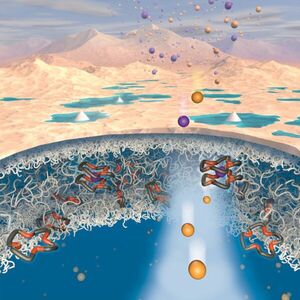
New Way to Pull Lithium from Water Could Increase Supply, Efficiency
"Anyone using a cellphone, laptop or electric vehicle depends on lithium. The element is in tremendous demand. And although the supply of lithium around the world is plentiful, getting access to it and extracting it remains a challenging and inefficient process. An interdisciplinary team of engineers and scientists is developing a way to extract lithium from contaminated water. New research, published this week in Proceedings of the National Academies of Sciences, could simplify the process of extracting lithium from aqueous brines, potentially create a much larger supply and reduce costs of the element for batteries to power electric vehicles, electronics and a wide range of other devices. Currently, lithium is most commonly sourced from salt brines in South America using solar evaporation, a costly process that can take years and loses much of the lithium along the way." [...]
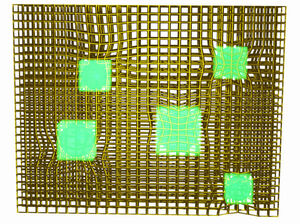
Perovskite LEDs shine in metal-organic framework
"Breakthrough in stabilizing nanocrystals introduces a low-cost, energy- efficient light source for consumer electronic devices, detectors, and medical imaging By stabilizing perovskite nanocrystals in a metal-organic framework (MOF), a research team has synthesized light-emitting diodes (LEDs) that exploit the performance benefits of the material while avoiding previous roadblocks. Based on earth-abundant materials and fabricated at room temperature, these LEDs could one day enable lower-cost TVs and consumer electronics, better gamma-ray imaging devices, and even self-powered x-ray detectors. “In this work, we demonstrated for the first time that perovskite nanocrystals stabilized in a MOF will create bright, stable LEDs in a range of colors,” said Wanyi Nie. Nie is a researcher for the Center for Integrated Nanotechnologies at Los Alamos National Laboratory and a corresponding author on the paper, which appeared today in Nature Photonics. “Metal-halide perovskite nanocrystals offer a continuously tunable optical band gap covering almost all the visible spectrum, meaning we can create different colors, improved color purity, and high photoluminescence quantum yield, which is a measure of a material’s ability to produce light.” “The intriguing concept of combining perovskite nanocrystal in metal-organic frameworks has been demonstrated in powder form, but this is the first time we successfully integrated it as the emission layer in an LED,” added Hsinhan Tsai, a former J. R. Oppenheimer postdoc fellow at Los Alamos. The research team on the paper included members from Academia Sinica (Taiwan), Argonne National Laboratory, Brookhaven National Laboratory, Los Alamos National Laboratory, SLAC National Accelerator Laboratory, and Stanford University." [...]

Scientists Develop Compact Nanolaser with Unique Properties
"A team of researchers from the ITMO University’s School of Physics and Engineering, the Nonlinear Physics Center at the Australian National University (ANU), and Korea University has developed a compact nanolaser based on a photonic crystal waveguide with super-high efficiency. The device is a photonic structure and is notable for its small size compared to its counterparts. An article about this device was published in Nature Communications. Compact lasers For several years now, a research team under the supervision of Yuri Kivshar, research supervisor at ITMO’s School of Physics and Engineering and professor at the Australian National University, has been conducting research in the field of nanolasers. Last year, the results of their research were published in ACS Nano and several others. The recent publication in Nature Communications concerns a “spin-off” of this research." [...]
Helping semiconductors find a cooler way to relax
"Extending the lifetime of hot electrons could help make solar cells more efficient. Bandgap engineering can improve the performance of optoelectronic devices that aim to harness the energy of “hot” electrons, research from KAUST shows. Semiconductors have a signature property known as the bandgap that essentially is a range of forbidden electron energies. Electrons with an energy above the top of the bandgap are free to move through the material, whereas those below the bottom of the bandgap are not, and no electrons with an energy in between can exist in the material. This simple idea defines a semiconductor’s optical properties. The energy from any absorbed light is transferred to the material’s electrons." [...]

MIT-designed project achieves major advance toward fusion energy
"New superconducting magnet breaks magnetic field strength records, paving the way for practical, commercial, carbon-free power. It was a moment three years in the making, based on intensive research and design work: On Sept. 5, for the first time, a large high-temperature superconducting electromagnet was ramped up to a field strength of 20 tesla, the most powerful magnetic field of its kind ever created on Earth. That successful demonstration helps resolve the greatest uncertainty in the quest to build the world’s first fusion power plant that can produce more power than it consumes, according to the project’s leaders at MIT and startup company Commonwealth Fusion Systems (CFS). That advance paves the way, they say, for the long-sought creation of practical, inexpensive, carbon-free power plants that could make a major contribution to limiting the effects of global climate change. “Fusion in a lot of ways is the ultimate clean energy source,” says Maria Zuber, MIT’s vice president for research and E. A. Griswold Professor of Geophysics. “The amount of power that is available is really game-changing.” The fuel used to create fusion energy comes from water, and “the Earth is full of water — it’s a nearly unlimited resource." [...]
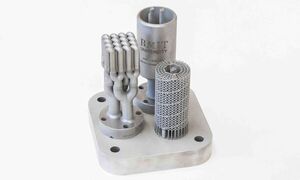
Next gen 3D printed catalysts to propel hypersonic flight
"Ultra-efficient 3D printed catalysts could help solve the challenge of overheating in hypersonic aircraft and offer a revolutionary solution to thermal management across countless industries. Developed by researchers at RMIT, the highly versatile catalysts are cost-effective to make and simple to scale. The team’s lab demonstrations show the 3D printed catalysts could potentially be used to power hypersonic flight while simultaneously cooling the system. The research is published in the Royal Society of Chemistry journal, Chemical Communications. Lead researcher Dr Selvakannan Periasamy said their work tackled one of the biggest challenges in the development of hypersonic aircraft: controlling the incredible heat that builds up when planes fly at more than five times the speed of sound. “Our lab tests show the 3D printed catalysts we’ve developed have great promise for fuelling the future of hypersonic flight,” Periasamy said." [...]

Nanoscribe GT2 adds to MIT.nano fabrication capabilities
"3D lithography tool will provide ultra-precise creation of complex 3D structures at the micro- and nanoscale. MIT.nano has added the Nanoscribe Photonic Professional GT2, a high-speed, three-dimensional microfabrication instrument, to its fabrication capabilities. The GT2 will provide MIT.nano users with the ability to create high-resolution 3D structures. It has been installed and qualified in MIT.nano’s third-floor soft lithography space, and is now available for training and use. The GT2 uses two-photon technology to crosslink special polymers and produce intricate structures of nearly any 3D shape, including crystal lattices, porous scaffolds, and naturally inspired patterns. The tool offers this design flexibility while also being incredibly precise — it has a finest resolution down to 400 nanometers." [...]

Nijmegen has the longest 3D-printed concrete bicycle bridge in the world
"Thanks to research at TU/e, the architect was able to work freely on the design and was not restricted by materials or traditional processes. The bridge was printed layer by layer in the concrete printing factory of Saint Gobain Weber Beamix and realised by the construction group BAM. It is not only the longest, but also the largest concrete bridge in the world for which the architect had complete freedom. Michiel van der Kley was able to work freely on the design and was not restricted by the material or traditional processes, such as concrete formwork. Because the span is not constant everywhere and therefore the changing weight of the structure had to be taken into account, the choice was made to divide the bridge into printable parts. A parametric model - that means based on data - was used to generate the final design." [...]

A universal system for decoding any type of data sent across a network
"New chip eliminates the need for specific decoding hardware, could boost efficiency of gaming systems, 5G networks, the internet of things, and more. Every piece of data that travels over the internet — from paragraphs in an email to 3D graphics in a virtual reality environment — can be altered by the noise it encounters along the way, such as electromagnetic interference from a microwave or Bluetooth device. The data are coded so that when they arrive at their destination, a decoding algorithm can undo the negative effects of that noise and retrieve the original data. Since the 1950s, most error-correcting codes and decoding algorithms have been designed together. Each code had a structure that corresponded with a particular, highly complex decoding algorithm, which often required the use of dedicated hardware. Researchers at MIT, Boston University, and Maynooth University in Ireland have now created the first silicon chip that is able to decode any code, regardless of its structure, with maximum accuracy, using a universal decoding algorithm called Guessing Random Additive Noise Decoding (GRAND)." [...]

New Opportunities for Light-Powered Battery and Fuel Cell Design
"Automotive and other industries are hard at work improving the performance of rechargeable batteries and fuel cells. Now, researchers from Japan have made a discovery that will enable new possibilities for future environmental stability in this line of work. In a study recently published in Applied Materials Today, researchers from the University of Tsukuba have revealed that ultraviolet light can modulate oxide ion transport in a perovskite crystal at room temperature, and in so doing have introduced a previously inaccessible area of research. The performance of battery and fuel cell electrolytes depends on the motions of electrons and ions within the electrolyte. Modulating the motion of oxide ions within the electrolyte could enhance future battery and fuel cell functionality--for example, by increasing the efficiency of the energy storage and output. Use of light to modulate the motions of ions--which expands the source of possible energy inputs--has only been demonstrated to date for small ions such as protons." [...]

Physicists engineer new property out of “white” graphene
"Ferroelectricity in ultrathin material could have applications in computer memory, more Ultrathin materials made of a single layer of atoms have riveted scientists’ attention since the discovery of the first such material—graphene—about 17 years ago. Among other advances since then, researchers including those from a pioneering lab at MIT have found that stacking individual sheets of the 2D materials, and sometimes twisting them at a slight angle to each other, can give them new properties, from superconductivity to magnetism. Now MIT physicists from the same lab and colleagues have done just that with boron nitride, known as “white graphene” in part because it has an atomic structure similar to its famous cousin. The team has shown that when two single sheets of boron nitride are stacked parallel to each other, the material becomes ferroelectric, in which positive and negative charges in the material spontaneously head to different sides, or poles. Upon the application of an external electric field, those charges switch sides, reversing the polarization. Importantly, all of this happens at room temperature." [...]
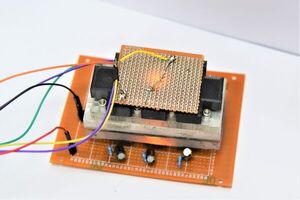
Modular device for extra-terrestrial experiments
"Researchers at the Indian Institute of Science (IISc) and Indian Space Research Organisation (ISRO) have developed a modular, self-contained device to cultivate microorganisms, which could enable scientists to carry out biological experiments in outer space. In a study published in Acta Astronautica, the team showed how the device can be used to activate and track the growth of a bacterium called Sporosarcina pasteurii over several days, with minimal human involvement. Understanding how such microbes behave in extreme environments could provide valuable insights for human space missions such as ‘Gaganyaan’, India’s first crewed spacecraft set to be launched in 2022. In recent years, scientists have been increasingly exploring the use of lab-on-chip platforms ‒ which combine many analyses into a single integrated chip ‒ for such experiments. But there are additional challenges to designing such platforms for outer space, when compared to the lab. “It has to be completely self-contained,” points out Koushik Viswanathan, Assistant Professor in the Department of Mechanical Engineering and a senior author of the study." [...]

Actuator Discovery Outperforms Existing Technology
"University of Houston researchers are reporting a breakthrough in the field of materials science and engineering with the development of an electrochemical actuator that uses specialized organic semiconductor nanotubes (OSNTs). Currently in the early stages of development, the actuator will become a key part of research contributing to the future of robotic, bioelectronic and biomedical science. “Electrochemical devices that transform electrical energy to mechanical energy have potential use in numerous applications, ranging from soft robotics and micropumps to autofocus microlenses and bioelectronics,” said Mohammad Reza Abidian, associate professor of biomedical engineering in the UH Cullen College of Engineering. He’s the corresponding author of the article “Organic Semiconductor Nanotubes for Electrochemical Devices,” published in the journal Advanced Function Materials, which details the discovery. Significant movement (which scientists define as actuation and measure as deformation strain) and fast response time have been elusive goals, especially for electrochemical actuator devices that operate in liquid. This is because the drag force of a liquid restricts an actuator’s motion and limits the ion transportation and accumulation in electrode materials and structures." [...]
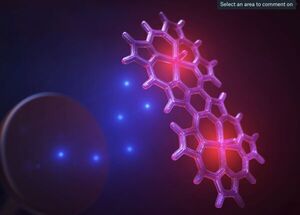
New research advances clean energy solutions
"Meeting society’s growing energy needs has become a daunting challenge for humanity. Demands for energy are expected to nearly double by the year 2050, while the effects of climate change, caused by the burning of fossil fuels, are already wreaking havoc in the form of droughts, wildfires, floods and other disasters. Gary Moore, a researcher at Arizona State University's Biodesign Center for Applied Structural Discovery and ASU's School of Molecular Sciences thinks chemistry will play a vital role in the development of clean solutions to the world’s mounting energy dilemma. In new research appearing on the cover of the journal ChemElectroChem, Moore and his colleagues describe the use of ring-shaped molecules known as porphyrins. Such molecules, among the most abundant pigments in nature, are noted for their ability to speed up or catalyze chemical reactions, including important reactions occurring in living systems. Among these reactions is the conversion of radiant energy from the sun into chemical energy stored in molecular bonds, a process exploited by plants and photosynthetic microbes." [...]
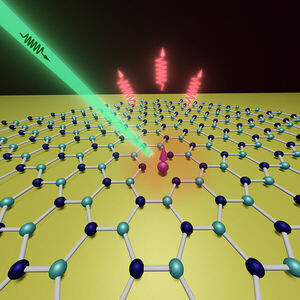
Researchers use gold film to enhance quantum sensing with qubits in a 2D material
"As recently as 2019, spin defects known as qubits were discovered in 2D materials (hexagonal boron nitride), which could amplify the field of ultrathin quantum sensing. These scientists hit a snag in their discovery that has unleashed a scientific race to resolve the issues. The sensitivity of spin qubits in hexagonal boron nitride was limited by their low brightness and the low contrast of their magnetic resonance signal. Last month, Nature Physics published an article titled “Quantum sensors go flat,” highlighting the benefits and outlining current shortfalls of this new means of sensing via qubits in 2D materials. A team of researchers at Purdue University took on the challenge of overcoming qubit signal shortcomings in their work to develop ultrathin quantum sensors with 2D materials. Their publication in Nano Letters demonstrates that they have solved some of the critical issues and yielded better results through experimentation." [...]

Graphene made with lasers for wearable health devices
"Graphene, hexagonally arranged carbon atoms in a single layer with superior pliability and high conductivity, could advance flexible electronics according to a Penn State-led international research team. Huanyu “Larry” Cheng, Dorothy Quiggle Career Development Professor in Penn State's Department of Engineering Science and Mechanics (ESM), heads the collaboration, which recently published two studies that could inform research and development of future motion detection, tactile sensing and health monitoring devices. Investigating how laser processing affects graphene form and function Several substances can be converted into carbon to create graphene through laser radiation. Called laser-induced graphene (LIG), the resulting product can have specific properties determined by the original material. The team tested this process and their results were made available online ahead of publication in SCIENCE CHINA Technological Sciences. Samples of polyimide, a type of plastic, were irradiated through laser scanning." [...]

Tapping into magnets to clamp down on noise in quantum information
"A Department of Energy-funded project between Argonne and the University of Illinois Urbana-Champaign explores coupling magnetism and microwaves for quantum discoveries. The U.S. Department of Energy (DOE) has recently funded both DOE’s Argonne National Laboratory and the University of Illinois Champaign-Urbana (UIUC) in a new project related to quantum information science. The Argonne team will bring to the project its expertise in coupling superconducting and magnetic systems. The UIUC team will contribute its world-class capabilities for developing new magnetic materials for quantum systems. “Quantum information science promises new and different ways in which scientists can process and manipulate information for sensing, data transfer and computing,” said Valentine Novosad, a senior scientist in Argonne’s Materials Science division. “UIUC is a perfect partner for us to realize breakthrough discoveries in this area.” In the emerging field of quantum information science, microwaves may play a fundamental role because their physical properties enable them to provide desired quantum functionality at temperatures near to absolute zero (minus 460 degrees Fahrenheit) — a necessity because heat creates errors in quantum operations." [...]

Stretching the capacity of flexible energy storage
"Some electronics can bend, twist and stretch in wearable displays, biomedical applications and soft robots. While these devices’ circuits have become increasingly pliable, the batteries and supercapacitors that power them are still rigid. Now, researchers in ACS’ Nano Letters report a flexible supercapacitor with electrodes made of wrinkled titanium carbide — a type of MXene nanomaterial — that maintained its ability to store and release electronic charges after repetitive stretching. One major challenge stretchable electronics must overcome is the stiff and inflexible nature of their energy storage components, batteries and supercapacitors. Supercapacitors that use electrodes made from transitional metal carbides, carbonitrides or nitrides, called MXenes, have desirable electrical properties for portable flexible devices, such as rapid charging and discharging. And the way that 2D MXenes can form multi-layered nanosheets provides a large surface area for energy storage when they’re used in electrodes." [...]

Scientists Unravel the Mysteries of Irreversibility in Electrochromic Thin Films
"Scientists from Japan have quantitatively evaluated ion-trapping-induced degradation in lithium intercalated tungsten oxide films Tungsten oxide, an electrochromic (EC) material with immense potential for technical applications such as in smart windows, has attracted much interest for its energy-saving qualities. However, after multiple cycles, such EC devices exhibit degradation in optical modulation and reversibility owing to lithium-ion trapping. Now, Japanese scientists have adopted a quantitative approach to understand the irreversibility of lithium intercalated tungsten oxide films, laying the groundwork for developing superior electrochromic materials and devices. Electrochromic (EC) materials, one of the key "green" technological components for sustainability and energy savings, have piqued the interest of academia and industry alike. Tungsten oxide (WO3) is among the most extensively researched EC materials that is widely used in today's "smart windows." One popular EC approach is the reversible insertion of small ions into electrode materials." [...]
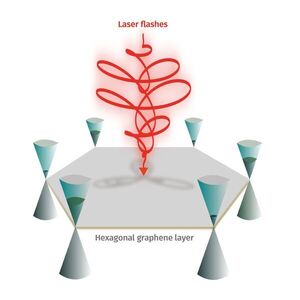
Graphene Valleytronics: Paving the Way to Small-Sized Room-Temperature Quantum Computers
"Valleytronics is an emerging field in which valleys—local minima in the energy band structure of solids—are used to encode, process, and store quantum information. Though graphene was thought to be unsuitable for valleytronics due to its symmetrical structure, researchers from the Indian Institute of Technology Bombay, India, have recently shown that this is not the case. Their findings may pave the way to small-sized quantum computers that can operate at room temperature. From the consumer’s side, it’s pretty easy to notice the giant strides that the field of electronics has made over the past few decades; with wearable gadgets, smart cities, self-driving cars, improved space missions, robots, holography, and supercomputers, the possibilities of technological advancement seem infinite. However, unbeknownst to most people, this accelerated trend of technological advancement fueled by electronics is rapidly coming to a halt as electronic components reach their practical limits. If we are to keep improving our computing power and capacity, we will need to find new ways to store and process data beyond the simple flow and charge of electrons, which is how modern electronics operates." [...]

Surprisingly high emissions from fuel-powered auxiliary heaters in cars
"Fuel-powered auxiliary heaters can be significant sources of particulate emissions from vehicles, a new study from Finland shows. Heaters, sold under such well-known brand names as Webasto and Eberspächer, among others, are used in both passenger cars and heavy-duty vehicles to preheat the engine and provide additional cabin heating while driving. Emissions from heaters are not regulated, although they are widely used in especially colder regions, such as Finland. Therefore, they can have a significant impact on local air quality, and even on regional or global emissions budgets. Researchers from Tampere University and the University of Eastern Finland studied the emissions of a total of eight selected vehicles equipped with an additional heater, either diesel or gasoline, depending on the car's propulsion power. Tests were carried out in collaboration with Dekati Ltd. Postdoctoral Researcher Panu Karjalainen from Tampere University says that the results of the study show that the particulate emissions of auxiliary heaters can be up to a thousand times higher than the particulate emissions of idling gasoline vehicles." [...]
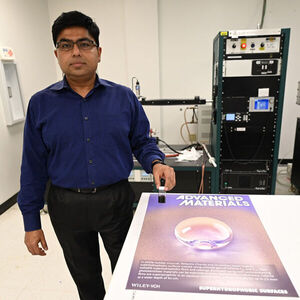
UCF Researchers Create Water-repellent Nanomaterial Inspired by Nature
"The novel superhydrophobic coating, which can potentially be used to create more efficient fuel cells and sensitive toxic gas detectors, can keep materials dry for longer and at greater depths. A team of researchers at the University of Central Florida have created a new nanomaterial that repels water and can stay dry even when submerged underwater. The discovery could open the door to the development of more efficient water-repellent surfaces, fuel cells and electronic sensors to detect toxins. The work is documented in the cover story of this month’s Advanced Materials journal. Debashis Chanda, a professor at UCF’s NanoScience Technology Center, led the team that created these novel superhydrophobic films and coating from nanomaterials. He was inspired by nature and evolution of certain plants and biological species “Being water repellent or hydrophobicity is nature’s tool to protect and self-clean plants and animals against pathogens like fungi, algae growth and dirt accumulation,” Chanda says." [...]
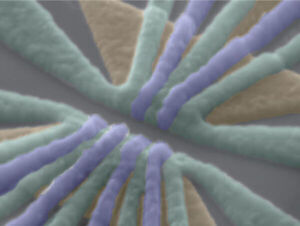
Quantum entanglement of three spin qubits demonstrated in silicon
"An all-RIKEN team has increased the number of silicon-based spin qubits that can be entangled from two to three, highlighting the potential of spin qubits for realizing multi-qubit quantum algorithms1. Quantum computers have the potential to leave conventional computers in the dust when performing certain types of calculations. They are based on quantum bits, or qubits, the quantum equivalent of the bits that conventional computers use. Although less mature than some other qubit technologies, tiny blobs of silicon known as silicon quantum dots have several properties that make them highly attractive for realizing qubits. These include long coherence times, high-fidelity electrical control, high-temperature operation and great potential for scalability. However, to usefully connect several silicon-based spin qubits, it is crucial to be able to entangle more than two qubits, an achievement that had evaded physicists until now." [...]

Electrically Driven Chemistry
"UD advance opens door to accessing new materials for catalysis, sensing and gas storage Metal organic frameworks (MOFs) are a promising class of materials that have many applications as catalysts, sensors and for gas storage. Widely studied over the past two decades, MOFs are typically produced using chemical processes that require high heat and high pressure. Now, University of Delaware chemists Joel Rosenthal and Eric Bloch report that it is possible to produce iron-based MOF materials directly using renewable electricity at room temperature. The UD-developed method is 96% efficient in using electricity to form the MOF materials quickly, reliably and inexpensively. The UD researchers reported the advance in a new paper published in ACS Central Science, a journal of the American Chemical Society. According to Rosenthal, professor of chemistry and biochemistry in UD’s College of Arts and Sciences, an easy way to think about MOFs is to imagine tinker toys, where clusters of metal atoms represent the toy’s wooden wheels and small organic molecules represent the spindly sticks that connect the clusters together." [...]

Simple Creation of a Super Multi-Element Catalyst Homogeneously Containing 14 Elements
"A research group in Japan has successfully developed a “nanoporous super multi-element catalyst”(1) that contains 14 elements(2) which are mixed uniformly at the atomic level and used as a catalyst. A high-entropy alloy composed of 10 or more elements may act as a catalyst to exhibit" omnipotency and versatility" being able to freely modify its morphology and become active according to the reaction field. However, so far, it has not been easy to produce entropy alloys composed of more than 10 elements. The reason is the existence of combinations of some elements that are hard to be mixed, like water and oil. A joint research group led by Research Associate Cai ZeXing and Professor Takeshi Fujita at School of Environmental Science and Engineering, Kochi University of Technology, and Professor Masahiro Miyauchi at School of Materials Science and Engineering, Tokyo Institute of Technology has developed a “nanoporous super multi-element catalyst” by a method called de-alloying(3) via the selective corrosion and elusion of a specified element from the alloy. The fabrication method is simple: an aluminum alloy containing 14 elements is prepared, and the nanoporous super multi-element catalyst is manufactured by preferential dissolution of aluminum using an alkaline solution." [...]
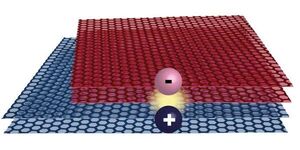
An insulator made of two conductors
"At ETH Zurich researchers have observed a new state of matter: in graphene layers twisted relative to each other, two electrical conductors team up to form an insulator. Ohm’s law is well-known from physics class. It states that the resistance of a conductor and the voltage applied to it determine how much current will flow through the conductor. The electrons in the material - the negatively charged carriers - move in a disordered fashion and largely independently of each other. Physicists find it far more interesting, however, when the charge carriers influence one another strongly enough for that simple picture not to be correct anymore. This is the case, for instance, in “Twisted Bilayer Graphene”, which was discovered a few years ago." [...]
Projetos Maker
Diversos Projetos interessantes.

Bias Oscillator Circuit
"INTRODUCTION: In this instructables I am going to make an electronic circuit to erase (demagnetize) a recorded compact cassette. This circuit is also known as 'Bias Oscillator'. This circuit is very easy to build and you can demagnetize all the compact cassettes that you have. Let's get started! DEMAGNETIZATION OF MAGNETIZED SUBSTANCES: To demagnetize a magnetized substance it is placed inside a solenoid and and a high frequency and high voltage is applied across this solenoid and and solenoid create a high frequency alternative magnetic field on its Centre. Magnetized material is placed on the Centre of this solenoid and after sometime we decreases the voltage across the coil slightly and we make this voltage 0V in the end and magnetic flux density inside the magnetized material becomes zero." [...]
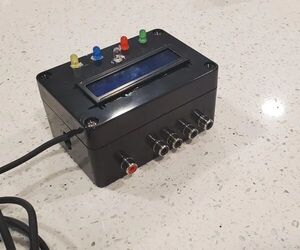
Arduino Jeopardy Buzzer With LCD Screen
"Welcome to this Instructable. With all of the recent news of a new Jeopardy Host on the horizon, I wanted to play Jeopardy at home with my friends and family. When playing with friends, we first tried to use buzzers that you could find at the store. The problem with these is that it's up to the host's judgement to guess who buzzed in first, and there's also no way to reliably enforce a "no early buzzing in" rule. I wanted to create a Jeopardy-in-a-box using an Arduino which would read buzzer inputs and reliable report out who was the first contestant to buzz in. Along the way, I also added functionality that penalizes contestants who try to buzz in early by putting a delay on their buzzer readings." [...]
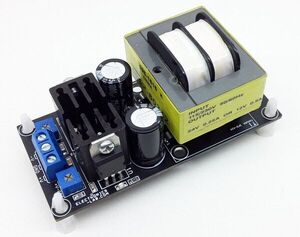
Dual Output Adjustable Linear Power Supply +/-1.2V to +/-12V @ 250mA
"This project is a solution to power up most devices or projects requiring dual (+/-) adjustable power. The circuit consists of a stepdown transformer, bridge rectifier, DC filter capacitors, LM317 positive and LM337 negative adjustable voltage regulators, 2 x trimmer pot for independent output voltage adjust, and power LEDs. " [...]
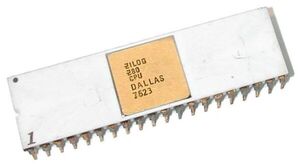
Z80 Core for Arduino Mega
"This library only functions with the Arduino Mega or Mega 2560 due to memory constraints! This is a free, open source project which comprises light modification of Marat Fayzullin's brilliant Z80 emulator in C in order to make it compatible with the Arduino Mega (other Arduinos do not have the memory to run it). You can view his download page for the original code here. This library is based off of Z80-081707.zip. Reading over Z80.h is strongly encouraged to get a feel for the bitfields and core CPU structs, as well as the functions you must implement (see Usage below) and optional ones you can enable with by #defineing flags (such as running until HALT or running n cycles at a time as opposed to one opcode at a time, which is the default behavior). " [...]

Global Earthquake Display
"The crust of the Earth is in constant motion. It's moving very, very slowly but in some places the pressure builds and builds and suddenly catastrophically releases in what a scientist would call a seismic event, or in more common parlance . . . an EARTHQUAKE! This is an Internet Of Things desktop gadget which takes data from a publicly accessible database and displays the location and magnitude of earthquakes on a world map in nearly real time." [...]
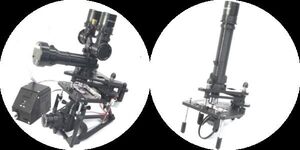
Puma 3D Printed Multimodality Microscope
"PUMA is an Open Source (GPL v3.0) 3D printed light microscope system designed for direct eye observations and ultra-portability with advanced options for digital imaging, measurements and computer control. The name PUMA is an acronym of some of its most important distinguishing features: [P]ortable, [U]pgradeable, [M]odular, [A]ffordable As a medical Pathologist I use high quality optical microscopes routinely. I know what a great optical image they provide, how comfortable they are to look down and also how horrendously EXPENSIVE they are to buy and maintain putting them beyond reach of most people. I designed the PUMA scope to make such a high quality optical viewing microscopy experience available to people without such generous funding resources. Most 3D printed open source microscopes I have seen appear to be either toys or low power inspection scopes and/or they are designed to be used as camera scopes with a web-cam / PiCam or smartphone. Many also seem to be novel re-inventions of the microscope that would seem unfamiliar to people used to operating a traditional laboratory bench top microscope - that doesn't mean they are not useful in their own way of course." [...]
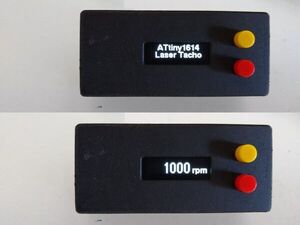
Laser Tachometer
"A small hand-held tachometer that uses a laser to show how fast an object is rotating in revolutions per minute (rpm). This Laser Tachometer is a rebuild of Elite Worm's Build a Laser Tachometer. Both the hardware and software have be redesigned. Hardware design The original version by Elite Worm used a Arduino Nano. I decided to replace it with a ATtiny1614 microprocessor. This processor has a very low power consumption in sleep mode." [...]
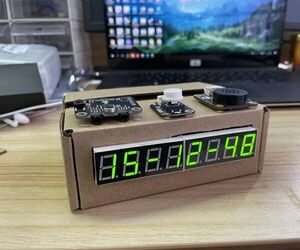
Making an Alarm Clock That Asks Questions Randomly
"Do you usually have trouble getting up? Set more than a dozen alarm clocks in the morning, but still can't wake up and turn them off in a daze. When you waking up and find out that you are late, and then you blame the alarm clock for not making any noise. In order to help me better complete my 996 workdays, a simple small alarm clock is specially made - an alarm clock that will randomly ask questions. Its unpleasant cry makes you sleepless; in addition, during the answering process, you must concentrate on listening to the question, otherwise, you will not be able to judge whether it is asking how many is one plus one or How many words in the question of how many is one plus one It is a home essential product, the initiator who forced you to the peak of life. Supplies - Arduino UNO ×1 - IO Expansion Board ×1 - Speech Recognition ×1 - Speech Synthesis Module ×1 - DS3231M MEMS Precise RTC ×1 - 7.4V Lipo 2500mAh Battery ×1 - Digital Push Button (White) ×1 - 8-Digital LED Segment Display Module ×1 - I2C HUB ×1 - Stereo Enclosed Speaker - 3W 8Ω" [...]

AquaMon - Aquaponics and Fish Tank Monitoring with Tuya IoT
"Marine species are extremely sensitive to changes in environmental conditions. AquaMon IoT device and app helps your fishes to grow better. Introduction Do you love sea creatures? I don't think I would find a single person who would not fall in love with sea animals. Vibrant, spectacular colours, textures all over their body adapted for camouflaging, adapting to sea conditions and for attraction. Though I never had a chance to take a deep dive into the seas or oceans and experience the beauty, I enjoy it every day with my pet fish and a small aquarium." [...]

3D_water_depth_logger
"A simple Arduino based logger for depth mapping of water bodies. Using cheap and simple hardware like a GPS module, an SD card and a standard NMEA capable echolot sounder. The data is then transformed into a depth map with depth contours using python and matplotlib. The harbour I mapped has an area of around 40.000m^2 and the water level changes 4 meters every 6 hours with the tides. As the measurement took around 1,5 hours, I had to take this tidal change into account and I used data from a Wasser&Schiffahrsamt water level. The logger writes depth data every 1 second but checks for valid GPS/depth synchronization before." [...]
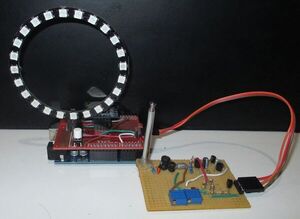
Lightning Detector
"It is often in the pursuit of one project that leads one to build others. For example, let us say that the work of Victor Frankenstein was being prepared for duplication at the premier Louisville, KY hackerspace; LVL1. Instead of pursuing special wiring and fuse boxes from the landlord and LG&E, this LVL1 were to go old school and rely on the weapons of Zeus. Detecting the approaching wrath of the pagan abomination would be necessary to time the re-expression of Dr. Frankenstein's genius. With the readily available Lightning Detection Modules with multiple built in functions, commencing Victor's opus would be easy, if not too easy. And so, with an eye on sanctity and purity of the ultimate goal, they have decided to build a simple circuit attributed to Charles Wenzel and condemn the modern modules." [...]
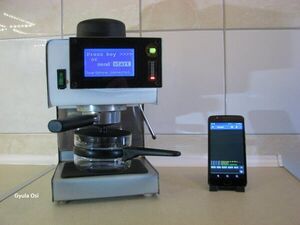
Smart Coffee Machine with Arduino and Bluetooth
"Not just a Smart Coffee Maker with Smartphone control, it's a multipurpose ThermoGraph also! Introdution Smart automatic Coffee Maker with Graph, can be controlled via Bluetooth... or just load fresh water, and the system will start automatically! Every each parts are handmade and all of the functions are my own ideas. Developed on Arduino Nano / Uno, uses ST7920 display, HC-05 Bluetooth adapter, Dallas DS18B20 temperature sensor, relay to control the heater coil, button with leds, buzzer and a CD4017BE decade counter drives the LED bar. " [...]

LED Camera Lights
"I needed some better lighting for my videos. So I figured I would take the opportunity to make my own. The goal is to have two panels one on either side of the camera so that the lighting is more even and I have more options for filming and cool lighting effects. I think this is to just be the first part of this project, but as Zack Freedman once said "if it works its finished," or something like that, so I figured I would share it with all of you. Right now, the panels are controlled over WiFi. I have 4 preset colors, feel free to add, modify, or expand on this project." [...]
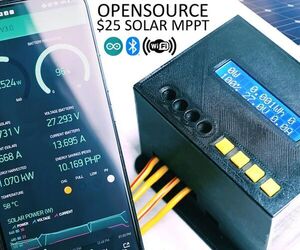
1kW Arduino MPPT Solar Charge Controller (ESP32 + WiFi)
"Build a 1kW WiFi MPPT Solar Charge Controller, equipped with phone app datalogging telemetry! (Android & IoS) It is compatible with 80V 30A solar panel setups and all battery chemistries up to 50V. The project is based on an Arduino ESP32 and runs on my Open Source Fugu MPPT Firmware! Total project cost is roughly around $25 (sourced from the Asian market). It is significantly cheaper than buying ready made $200 MPPTs What Is An MPPT And Why It Is Important To Solar Panels? Maximum power point tracking (MPPT) is a technique used with energy sources with variable power, like solar panels, to maximize energy harvesting!" [...]
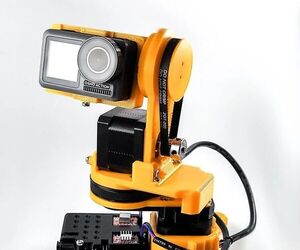
Remotely Operated WEBCAM / Laser / Camera /flashlight
"This is, basically, a 2 axis (azimuth/altitude or pan and tilt) cable or Wi-Fi controlled robot. Completely OPEN SOURCE (all the design files and control code are fully available for everyone to modify or adapt it to its needs) and with a 3D printed frame. It can hold: small cameras, laser pointers, flashlights, toy guns, a stick…. everything you want to move or point to. It has been designed with these premises in mind: - Have to be easy to print and set-up - Arduino compatible / Python code controllable - With a smooth but fast movement - Accurate - Robust but portable - Adaptable and easy to be modified You can attach to it: - Webcams - Cameras - Lasers - flashlights - ...." [...]

FM Stereo Receiver add-on for Raspberry Pi
"Simple FM stereo receiver based on QN8035 for Raspberry Pi. The QN8035 is a stereo FM radio receiver launched by the Quintic Corporation. Compared to other popular digital FM tuners (RDA5807, TEA5767, etc. ), this tuner does not seem to be as popular among the DIY community. In this article, I will describe my test setup and software applications built around this IC. After a few days of testing, I construct a fully functioning Raspberry Pi 3 based FM radio receiver using this IC." [...]
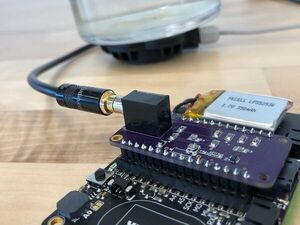
Hydrophone Feather Board
"I wanted to build a TinyML model that could detect when a boat is nearby by listening for it on a hydrophone. Edge Impulse makes it easy to build ML Models that can run on an Arduino board and detect events in audio. The tricky part ended up being how to connect a hydrophone to an Arduino board. I looked around but didn't see any existing boards for powering and amplifying a microphone, like the hydrophone... so I decided to build one! I started by modifying the Electret Microphone module from Adafruit. It powers and amplifies the microphone." [...]
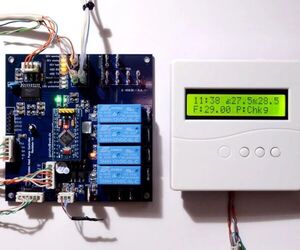
Valden: Heat Pump Controller
"The Valden Heat Pump controller is an open source platform to precisely control heat pumps. This controller can be used for the automation of newly built Heat Pumps (HPs), as a repair controller for old systems or as control system for performing experiments on refrigeration equipment. Specs: - 12V 0.5A DC power supply, - 230V output, -4 16A relays: Compressor, Hot Circulating Pump (CP) or Air Fan, Cold CP or Air Fan, Crankcase Heater, - 2 inputs: Hot and cold side refrigerant over/under pressure NC sensors, - up to 12 temperature (T) sensors, -55..+125 C range, - Electronic Expansion Valve (EEV) supported, 6 pin EEV connection: 4 * coils + 2 * 12V, - automatically turns on/of system when heating required, - automatic power saving mode, - built-in protections: cold start, overheat, short-term power loss, power overload, ground loop freeze, compressor protection against liquid and other, - LED indication, - control via remote display https://github.com/openhp/Display/ or local Serial (UART 5V). Refrigeration schemes supported: - Heat Pump (HP) with Electronic Expansion Valve (EEV), - HP with capillary tube or TXV, - EEV-only controller. " [...]
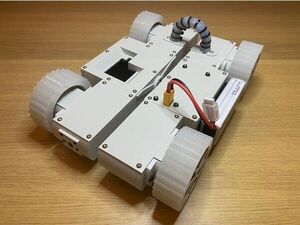
Scout. WebRTC controlled robot
"Scout is an open-source robot platform. It works with roboportal.io, supports real-time video, and controls streaming over WebRTC. Motivation A few months ago, I got an idea to build a robot you can control over the internet. The main requirement for this project is to avoid any overhead on the network setup. It should work without the real, known, or static IP address of the robot. Also, the implementation should work well with cellular connections." [...]

Cube Clock
"A tiny 8x8 matrix clock that automatically rotates the display when the cube is rotated. Recently I stubbled across the Lexon Flip Travel Reversible LCD Alarm Clock. It got me wondering about a clock that always showed the time in the same orientation no matter what orientation the clock itself was in. I decided to use a 8x8 Matrix as the display in a case that is basically a cube. Because a 8x8 LED matrix can't show the complete time as text, the text needs to scroll. I decided to use mercury switches to determine the orientation of the cube as they are small and relatively cheap compared to a MEMS unit (Micro Electro Mechanical System) such as the MPU-6050 6-axis accelerometer/gyroscope." [...]
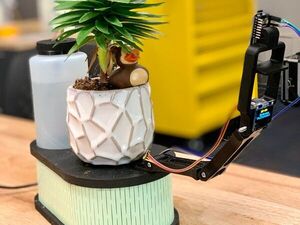
Automatic Plant Watering + Time-Lapse
"Automatic Plant Watering System with a built-in time-lapse to watch your plant grow! With this system, you never need to worry about it running out of water again. Using a moisture level sensor in the plant, every 30 minutes the plant will check its water level and determine if it needs a splash more! The system also publishes all of its metrics about the environment around it to a site you can access from anywhere. If you happen to notice the plant is needing just a bit more water, with an easy push of a button from your cell phone you can always give it the water it needs! But that's not all!" [...]

Gesture Recognition on Microcontroller with TinyML
"Using gesture recognition with the in-built light sensor, the Wio Terminal will be able to recognize the rock, paper and scissor gesture. Alright, let's get started with our Gesture Recognition on Microcontroller with TinyML! Let's go! Using gesture recognition with the in-built light sensor, the Wio Terminal will be able to recognize the rock, paper and scissor gesture and display the corresponding image on the screen. "Kids everywhere play rock, paper, scissors. The game is very old." [...]

Stranger Board
"Stranger Things themed desktop board / word clock A desktop version of Joyce Byers Christmas lights that you can connect to using your phone and send custom messages. As a bonus it spells the time at each minute. The project is wholly composed by off the shelf components: - ESP-01 - Arduino - DS3231 RTC - NeoPixels - 5V to 3V3 regulator" [...]

Homebrew 8-Bit Computer With TinyBASIC and ATMEGA1284P
"I have assembled many desktop computers over the years but it's just not the same when you don't use a soldering iron! I wanted to build a computer from scratch for a long long time because I find when you have a go at building something go gain a better knowledge of it's inner workings. I have previously built homebrew computer variants using 6502 processors however these systems are not friendly for the novice or intermediate maker. I have also finally joined a hackspace (@NHackspace) so I wanted to put all my hacking skills to the test. This simple computer I built is based on an Arduino running TinyBASIC which has been done before but I wanted to do a complete build with homebuilt PCB, keyboard interface, monitor / tv output, sound and SD card storage. By day I am an industrial controls engineer and tend to use very robust proven modules in control systems rather than handmade parts." [...]

3d Printed Measuring Tools and Useful Accessories
"Hello again .. Today in this Instructables I'm going to show some examples of some 3d printed tools and items which I have designed and printed in the last few weeks.. Recently I got my own 3d printer...A very common one is Ender 3...and I am learning Fusion 360 since then...and in this time period.. I made these items to make my workflow easier... I know there are alternatives are available to buy.. But I wanted to take the opportunity to make my own items.. I personally designed Most of the models I have printed... And I do have all the fusion files to show that...also I downloaded some from Thingiverse and printed them directly...I will link everything accordingly..." [...]

DIY Fiber Optic Light Sculpture
"As I mentioned in my previous instructables Fiber Optic and LEDs - a Wall Decoration and Fiber Optic LED Lamp, when I discovered decorative fiber optics I realized that they can be used in a creative way and in projects where I really didn't think they could work. This time I want to propose a very simple application, based on some articles here on instructables.com and on the internet. - Fiber Optic LED Matrix - Fiber Optic LED Dandelion Lamp - Fiber Optic Fairy Wings but also on the construction of the so-called Fiber Optic LED lamps, on amazon.com for example (I think you all know them): And I don't want to sound immodest when I use the expression "light sculpture" in the title of my instructable but the end result is really memorable, you just have to have the patience to follow my article until the end :)" [...]

DIY Advanced Arduino Barometer
"A barometer is a scientific instrument that is used to measure atmospheric pressure. Pressure tendency can forecast short-term changes in the weather. This time I will show you how to make an advanced barometer. Inexpensive home weather stations only show images of raindrops, clouds, or the sun. More advanced weather stations show the current pressure value as a number, and the pressure change over the preceding few hours as a rough bar graph, mainly for decorative purposes. Such weather stations are significantly more expensive." [...]
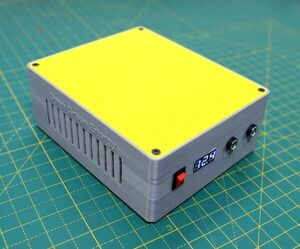
DIY Mini UPS for WiFi Router V5.0
"The pandemic COVID-19 outbreak forced companies to continue with work-from-home policy to maintain social distancing and for business continuity. More and more of us are working from home these days, and that means your home's WiFi networks are more important than ever. Anyone with a fixed-line connection will know that their WiFi drops whenever the power goes out. It is annoying if you are in an important meeting/webinar through Zoom, WebEx, or MS-Team, and there is an interruption due to power cuts. Solutions : 1. Using a conventional UPS ( Bulky and Costly ) 2." [...]

Dual +12V/-12V @ 400mA Regulated Linear Power Supply with AC input
"The project presented here is a dual output linear power supply. This power supply provides low ripple low noise DC regulated output. It is a very useful tool to power Audio, Video, OPAMP-based circuits, and projects. The circuit provides regulated +/-12V DC output @ 400mA + 400mA. The project supports AC input supply 230V or 115V. On-board jumpers are provided for AC230V or AC115V selection." [...]

DIY Arduino based Quadcopter Drone
"Complete the Arduino-based Drone Assembly with the Arduino-based Receiver and Flight Controller as well. This is the third and final part of our Arduino-based Drone Series. In the first part, we made a flight controller for our drone using the Arduino Nano and MPU6050 module. In the second part, we made an Arduino-based Remote Controller Pair to control our drone. Now in this final part of our drone series, we are going to assemble the frame of our drone, load it with motors and ESC's and after that, we will complete the circuitry part as well by connecting the Flight Controller and Radio Receiver that we created. The frame that we are going to use here is the DJI F450 Quadcopter frame." [...]
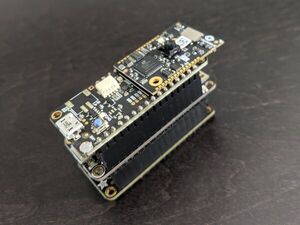
Battery-Powered Image Logger
"Small battery-operated board with low-power image sensor that captures images at regular intervals and saves them on a memory card. I recently posted some of the work I was doing on twitter and I got an e-mail from someone I knew that said so what, what's it good for? That's a great question, so let's start there. The camera module in this project is inexpensive (under $10) and low-power, but also low-resolution (320x320), and not exactly worthy of capturing those memorable moments of your life. However, it is great for things like doing computer vision in a battery-powered device. In particular, I'm interested in using it with convolutional neural networks (CNNs), and for that, we need data!" [...]
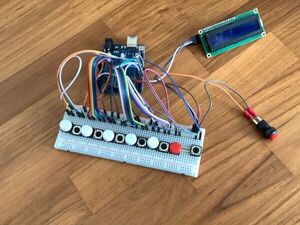
Calculator
"A cool calculator" [...]
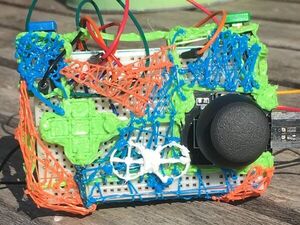
Arduino game controler
"Custom Arduino game controler with six buttons. I wanted to make a custom controler for my computer. (i use mac but I think it will work on anything)so I went to work and made this, the cad is made from a 3d pen. " [...]

Pico Alarm Clock
"This is an alarm clock that is running on Raspberry Pi Pico and is displaying on a TM1637 7-segment display. In this project I try to stay close to the hardware and implement what I can from scratch. For example, I wrote my own library for the display and I use real hardware interrupts for button clicks and time based events. Hardware: - Raspberry Pi Pico - TM1637 7-segment display - Passive buzzer - 3 Buttons - Led (I used a yellow one) - 4 Resistors: 3 for button debouncing (1k) and 1 for the LED (2k). Exact sizes are not important and might vary depending on the buttons and LED. - 3 Ceramic capacitors (100 nF) for button debouncing." [...]

Make Your Own RGB Ring Light Glasses
"It's really difficult to read in dark environments, so I made a pair of glasses with Neopixel RGB lights and a photoresistor so you never have to worry about lighting again! These glasses use a 3D printed frame designed through Tinkercad and uses a photoresistor to create dynamic lighting depending on how dark it is. The RGB Glass also has different functions like rainbow mode and morse code mode. You can also add-on different functions yourself! Materials - 2 Adafruit NeoPixel Ring 24x RGB Lights - 1 Photoresistor - 1 10k ohm resistor - 1 Lily Pad Arduino - 1 Rechargeable 3.7V battery with JST connector - Jumper cable kit - 2 M4*10 Screws Tools - Soldering Iron with Solder - 3D Printer - Standard Screw Driver - Hot Glue Gun" [...]
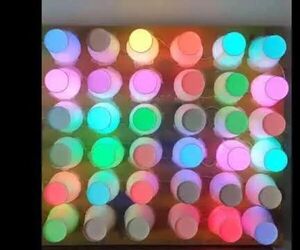
Lighting Board / Tableau Lumineux
"Here is a nice and quick project to do with children or young adults! From manual to welding, and from electronics to programming, to illuminate the eyes of young and old! Supplies - Arduino uno - Ledstrip" [...]
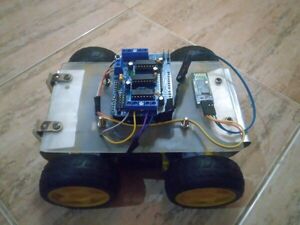
Bluetooth control car
"This car control using smartphone I made this car using Arduino UNO, L293D Motor Drive Shield, and Hc-05 Bluetooth module. This car control using a smartphone 📱. This car connects to a smartphone using a Bluetooth module" [...]

Acoustic Levitation With an ATTiny 4/5/9/10
"My previous Instructable featured a 555 timer with a hex inverter used to generate a 40 kHz square wave and drive the ultrasonic transmitters. As you can see, the circuit is pretty large. I thought I could avoid using an overpowered MCU for such a simple task, but found that an ATtiny (4/5/9/10) was simple enough to generate both the 40 kHz noninverted and inverted waves with only a few lines of code! This work is based on the design by Asier Marzo. The ATTiny come in SO-23 packaging and are smaller than a grain of rice allowing us to make things very small! If the smaller ATTiny 4-10 are difficult to find in stock, you can also use a larger ATTiny 85 or other MCUs with a few modifications to the attached EagleCAD schematics and code." [...]
Secção Videos
Videos interessantes.
That's all Folks!



